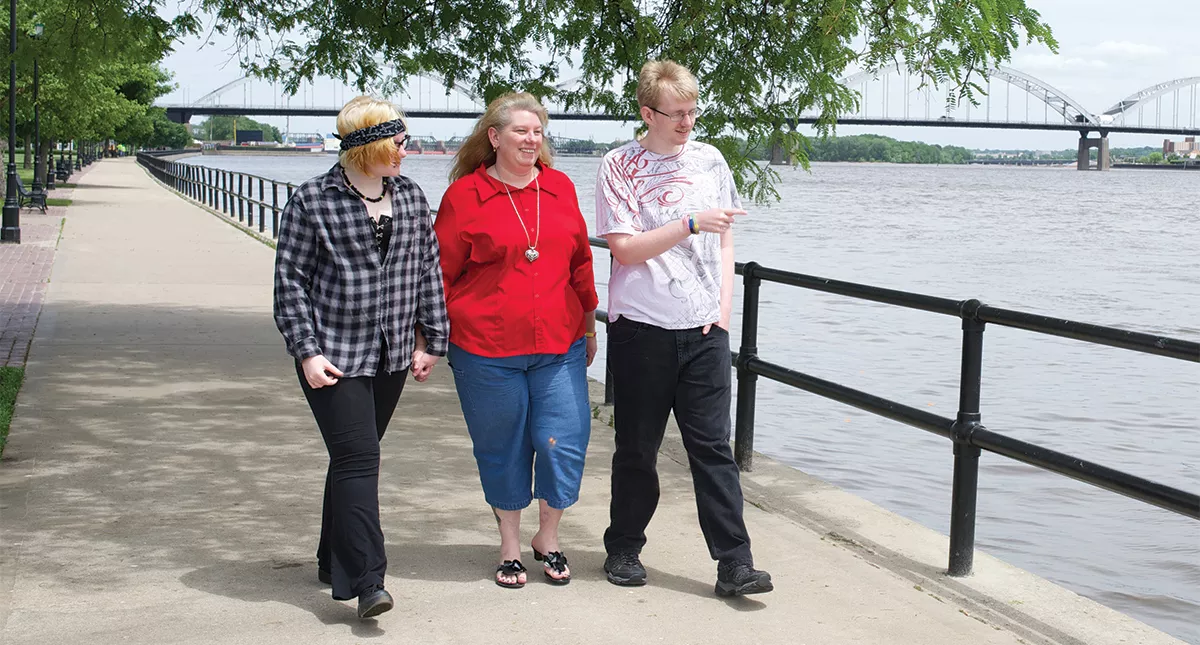Fibrosing mediastinitis: young Iowan’s future undercut

Fibrosing mediastinitis. Most people probably have no idea how to pronounce it, let alone know what it is. Unfortunately, Cody Fry of Davenport, Iowa, is all too familiar with the term. It’s become something of an enemy that he literally has to fight with for his very life.
That battle began with an infection by a fungus named Histoplasma capsulatum. The fungus lives in the environment, usually in association with large amounts of bird or bat droppings. The fungus is very common in the Midwest, especially in the Mississippi River valley.
Lung infections can occur after a person accidentally inhales the airborne, microscopic fungal spores from the surroundings. Many people who inhale the spores do not get sick, but some can become ill and are diagnosed with histoplasmosis.
The symptoms of histoplasmosis are similar to pneumonia. People with a mild form of the disorder may not need to be treated and usually feel better in about a month. More serious infections may require treatment with antifungal medications for up to a year.
In rare cases, histoplasmosis progresses to fibrosing mediastinitis (sometimes called mediastinal fibrosis), a very serious condition in which the body produces excessive fibrous, or scar, tissue in response to the infection.
Cody, now 22, is one of the unfortunate few, having first become sick in 2011 after accidentally exposure to the Histoplasma capsulatum fungus. His symptoms became so severe he had to drop out of college.
Doug Hornick, MD, a lung specialist at University of Iowa Hospitals & Clinics, explains Cody’s problems this way: After the histoplasmosis infection in his lungs healed, the residual fungal particles triggered proliferation of tough, fibrous, non-cancerous growths in the mediastinum (the space between the lungs that also contains large blood vessels, the bronchial tubes, and the heart). Those fibrous growths build up, sometimes slowly, but in in cases such as Cody’s, that scar tissue can build up rapidly. The scar tissue may then block the major blood vessels or bronchial tubes. Patients may cough up blood, develop pain, experience shortness of breath or even heart failure
Cody says he had no idea how difficult life would become. “Even today, I cannot walk for long distances without losing my breath and feeling like I am going to pass out,” he says. “I have been to UI Hospitals & Clinics so many times for tests and procedures that it feels like my life revolves around this disease.”
Cody’s mother, Sharon, says she never heard of fibrosing mediastinitis until it hit close to home. “There’s not much information available about it, beyond knowing what causes it,” she says. “One of the things I hear a lot is people see my son and don’t think that he is sick because on the outside he looks like a normal 22-year-old. But the damage inside his chest is very serious and potentially fatal.”
Fortunately, a team of University of Iowa specialists has collaborated to skillfully manage a series of Cody’s serious medical complications. For example, when Cody began coughing up blood, interventional radiologists helped control the bleeding in his lungs by skillfully guiding tiny catheters into the bronchial vessels to block the leaks. The only other treatment would have involved surgically removing a portion of Cody’s lung.
Treating another complication required specialized care from UI Heart and Vascular Center specialist James Rossen, MD.
“Abnormal tissue growth has caused severe narrowing of the veins that connect Cody’s lungs and heart,” Rossen says. “We have successfully placed stents in these veins to improve blood flow and reduce upstream pressure build-up.”
Surgically removing the growths is not a good option and medications do not slow the progression of the disease. For now, the plan is to sustain the skilled use of multi-disciplinary teamwork and advanced technology to help Cody hold the disease at bay.
“We cannot cure fibrosing mediastinitis,” Hornick says, “but we can apply modern medical techniques developed for more common medical problems to manage the complications and sustain a decent quality of life. It is the best we can do until medical science can develop effective ways of stopping the unrelenting fibrous growth.”
Sharon Fry says: “I want to thank everyone at UI Hospitals & Clinics for their outstanding care and commitment to the people and families affected by this rare disease. I just wish there was more information for them to use to help treat the people with this disease and someday find a cure.”
–Fall 2014